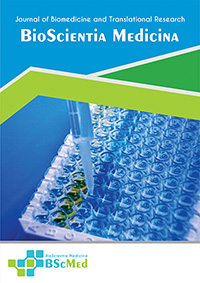Main Article Content
Abstract
Background: The accurate and timely diagnosis of acute coronary syndrome (ACS) in resource-limited healthcare settings is critically hampered by the high cost and limited availability of the gold-standard biomarker, Troponin I. This study aimed to conduct a preliminary evaluation of the association between two accessible platelet indices derived from the complete blood count—the platelet-large cell ratio (P-LCR) and the immature platelet fraction (IPF)—and the quantitative degree of myocardial injury in patients with ACS.
Methods: An exploratory, cross-sectional study was conducted on 51 consecutive patients diagnosed with ACS at a tertiary referral hospital in Medan, Indonesia. The relationship between admission P-LCR, IPF, and Troponin I was assessed using a multi-faceted statistical approach, including Spearman's rank correlation, an exploratory multivariable linear regression model, and a Receiver Operating Characteristic (ROC) curve analysis. A post-hoc power analysis was performed to contextualize the findings.
Results: The study was found to be statistically underpowered (power ≈ 60%) to reliably detect weak correlations. A statistically significant but weak positive correlation was observed between P-LCR and Troponin I levels (Spearman's ρ = 0.31, p = 0.026). This association remained significant after adjusting for age, gender, and ACS subtype, but the overall model demonstrated minimal explanatory power (Adjusted R² = 0.18). The ROC analysis for P-LCR in discriminating between normal and elevated Troponin I was poor (Area Under the Curve = 0.65; 95% CI: 0.50 - 0.79). No significant correlation was found between IPF and Troponin I (p = 0.093).
Conclusion: P-LCR exhibits a weak, independent statistical association with the degree of myocardial injury in ACS patients. However, its poor discriminatory performance, coupled with the profound methodological limitations of this preliminary study, demonstrates that P-LCR is not a clinically useful biomarker for the identification or stratification of myocardial injury. These findings underscore the significant translational gap between a plausible biological hypothesis and a clinically viable diagnostic tool, highlighting the immense complexities that must be addressed in future, more robustly designed research.
Keywords
Article Details
As our aim is to disseminate original research article, hence the publishing right is a necessary one. The publishing right is needed in order to reach the agreement between the author and publisher. As the journal is fully open access, the authors will sign an exclusive license agreement.
The authors have the right to:
- Share their article in the same ways permitted to third parties under the relevant user license.
- Retain copyright, patent, trademark and other intellectual property rights including research data.
- Proper attribution and credit for the published work.
For the open access article, the publisher is granted to the following right.
- The non-exclusive right to publish the article and grant right to others.
- For the published article, the publisher applied for the Creative Commons Attribution-NonCommercial-ShareAlike 4.0 International License.





